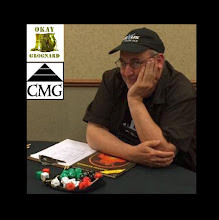As I fine tune some rules I am going to use in some games for autumn, I have come back around to the question of diagonal measuring and square grid use for miniatures. Having a wargaming background that stretches back to the early Seventies, I've naturally seen many different systems and ways to use grids and measurements in tabletop games. My first wargame was Tactics II which was a sort of introductory level wargame with generic red and blue armies fighting over fictitious territory. It had a square grid, very unusual for wargames that followed which primarily switched to hexagons as a standard. The switch to hexes appealed to the simulationist mindset that realized diagonal movement on a square grid allowed increased relative movement and range distances over hexes.
Of course, for miniatures wargaming the tabletop was wide open and sans grid, everything measured with rulers and tape measures. The foibles of each system so open often boiled down to rules about what part of a base was the starting point for measuring. Some would require measurement from the middle of a unit while others might stipulate measuring movement from the farthest moving corner of a base. Lines of sight, for command and combat, and lines of fire, for ranged weapons or magic (in fantasy battles), might use the middle of a unit or might allow that any part of a line measured from and to any part of of a base, unobstructed by terrain or obstacles, was fair game.
When tabletop RPGs came on the scene the defaults for those who used miniatures became hexes for outdoors and squares for indoors. These dictates seemed to have been guided but the fact that it was generally easier to represent indoor locations on square grids and that the great outdoors didn't need such straight lines for accurate simulation of terrain. It wasn't until later tabletop RPGs came on the scene that rules about counting movement and range on squares required some additional calculations, every other square essentially counting as double. This introduced another level of complexity when adjudicating area effects for explosions and spells of some varieties.
My own thinking is that the level of complexity in adding the simulationist touches regarding the diagonal calculations is detrimental to tabletop RPGs. Combat rules in tabletop RPGs risk overshadowing the RPing that can take place in even the simplest of systems. With a wargaming background, I am in favor of miniatures being used during gameplay but I also feel that a tabletop RPG should be flexible enough to do without miniatures. Therefore, rules that key too much on such aspects of combat, particularly which require calculations such as above, promote a mental distancing of players from their player character that is undesirable. I'm personally looking to simplify such things in rules I use in hopes of maintaining a deeper level of RPing immersion.
Sunday, July 24, 2011
Diagonal Measuring in Tabletop Games
Subscribe to:
Post Comments (Atom)



No comments:
Post a Comment